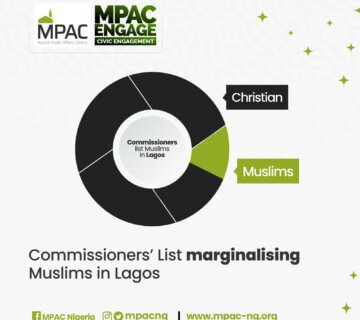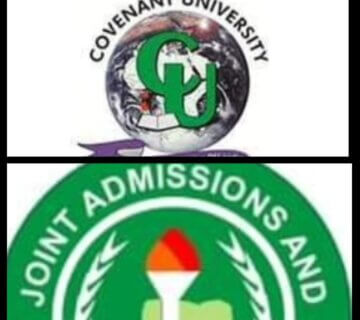Checklist: Communicating with Government Officials
- Familiarize yourself with the government official staff roles.
- Review the legislative process.
- Identify key government officials.
- Prepare an information kit about your organization.
- Write letters to key legislators and other influential public officials.
- Arrange for a meeting with key public officials. Review tips on meeting with government officials prior to your meeting.
- Prepare issue papers and handout materials for meetings.
- Write letters and/or make phone calls to key staff on important issues.
- Contact candidates about their views on issues on your agenda. Provide them with information on your views.
- Consider hosting a “Meet the Candidate” Night event.
- Sponsor or participate in conference.
Writing to Public Officials
The primary and simplest link between organizations or government officials and their constituents is the mail. Thus many people and organizations are bound to take advantage of this means of communicating. However, only a small portion of letters written will have a discernible impact on the course of legislation or company policy. Consequently, the art of writing effective letters may make the difference between success and failure in your organization’s campaign. It is important that we tell elected officials where we stand on issues. Our input on issues close to our heart shapes the way our representatives create and implement policies.
Emails, postcards, and phone calls are good communication tools, but letters and faxes are the most effective and persuasive way of communicating our views to elected officials.
A letter on behalf of you or your organization should be addressed to an official personally. Mail arriving at a public official’s office is typically routed through staff members with only a select few letters actually reaching the officeholder. To be most successful, your letter should be persuasive and to the point. The most effective format is a regular, typed business letter no longer than two pages. The letter should always include a request for action. State your message clearly at the start of the letter and then provide details of your personal story, if you have one. Personal letters rather than form letters receive the most attention. The following format is recommended to ensure your letter effectively communicates the key message.
1st Paragraph
- Identify yourself as a representative of an organization.
- Identify the reason for writing and the issue(s) you wish to address.
- Include information about the organization (i.e. size, diversity of members, mission).
2nd Paragraph
- State your views on the issue in your own words.
- Include a statement about the impact the issue has had or will have on you and your community.
3rd Paragraph
- Clearly state what you would like the official to do.
Closing Paragraph
- Thank the official for his or her attention to this matter and offer to be available for any questions.
Lobbying Tip: Limit Your Target
One of the errors made in letter-writing campaigns is to try to reach everyone. Particularly when dealing with legislative issues at the state or federal level, it is difficult to arrange for numerous coalition members to write personal letters to hundreds of legislators. It’s also not necessary.
Depending on the issue, focus on the narrowest possible group of officials. Identify supporters who hold key positions through which they can influence the issue. Leaders of the entire legislative body as well as specific committees and subcommittees can be particularly important. For example, in the early stages of a legislative process, communications should be directed to the appropriate subcommittee and its chairperson, ranking minority party member, and members. Contact your own representatives, especially when they serve in these roles. Target similar key leaders as the bill moves through other stages of the legislative process.
Finally, many bills fall under the jurisdiction of more than one committee. Be alert to this. Some of your most important supporters may serve on one committee and be unaware that the relevant legislation is pending in another committee.
Letter-Writing Campaigns
If you are organizing a letter-writing campaign, it is more effective if the communications are personal rather than simply a stack of identical form letters. Members of your organization should write in their own words and include personal anecdotes. To assist them in doing this, you should provide a fact sheet that outlines the facts of your particular issue(s) and your organization’s position. The purpose of the fact sheet is to help your members write letters; it is not intended to be sent in lieu of or with a letter.
Encourage your members to select one or two of the issue or messages contained in the fact sheet and concentrate on them rather than repeating all of the subjects. The selection of issues should be left to each individual writing a letter. This will ensure the officeholder hears a variety of viewpoints.
The fact sheet should contain the following:
- Statement of the issue(s)
- The organization’s position on the issue(s)
- Status of the issue; i.e., pending legislation, administrative action, policy decision, etc.
- List of reasons to support or oppose the issue(s)
- Action you want the concerned official to take.
Lobbying Tip: Form Letters Are Weighed, Not Read
A majority of mail received by government officials, particularly legislators, consists of pre-printed postcards, form letters and handwritten letters with identical wording. Be aware that this type of communication will not receive personal attention. The writers will receive a form letter in return, and it is almost certain they will not receive individual scrutiny. A well-organized personal letter-writing campaign can be a more effective tool to influence government officials’ decisions and views.
Still, there can be value in conducting a massive letter-writing campaign. Officials will want to know the number of “automated” pieces of mail a particular issue is generating. This will alert him to the fact that a grassroots movement has been mobilized and may have the potential to generate increased interest, support and media attention.
Pay special attention to responses that suggest general sympathy with your cause, but state they do not support your position on a particular issue. Such an official may be a prime candidate for follow-up meetings. You may be able to persuade the official by discussing his or her specific reservations. If a response includes erroneous or incomplete information, immediately draft a polite follow-up letter that includes the correct information and offers additional data and assistance. This draft should be sent by the person who originally contacted him or her.
If an official does not respond to your letters within a month, try sending a second letter that mentions the first correspondence. Public officials are often overwhelmed with mail and some respond more quickly than others. Some officials only answer letters when they have duty to do so or when an interest is at stake. In these cases, you may need to visit the office personally.
Lobbying Tip: Analyze the Responses
An analysis of responses to your campaign allows you to learn who your supporters and opponents are. It can also help:
Determine weak points in your arguments;
Decide what kind of adjustments need to be made in messages and in the campaign (based on officials’ criticisms or misunderstanding);
Detect whether your opponents have been active, as evidenced by the appearance of the same objections or statistics in a number of negative responses (suggesting the opposition is distributing information); and
Focus your next round of targets and, if necessary, rebuttals of erroneous information.
Lobbying Kit







No comment